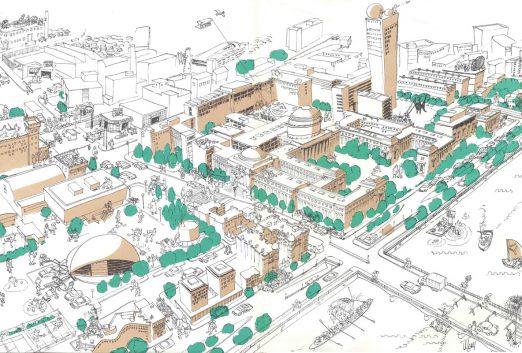TLDR: MIT is a complicated and busy place full of talented people doing incredible things…who knew!?! Being strategic in how you navigate this ecosystem and spend your time can help you more easily connect with others and surface unique opportunities that help you find the path that is most conduc(t)ive for you.
In nature, objects often follow the path of least resistance. Water finds the path of least resistance downhill and electricity finds the path of least resistance to ground, but these happen to be the places where water and electricity want to go, and they are not really concerned with how long it takes to get there. But if you are that “object” and you are starting a two-year professional master’s program at MIT, the path of least resistance may not enable you to get the most out of your experience. So where do you want to go and how do you want to get there?
These were the questions I was asking myself when I decided to join MIT’s System Design & Management (SDM) program; taking my path in a new direction. For me, coming to MIT felt a lot like the beginning of a new role-playing game; I arrived on campus not knowing where anything besides the main dome building was. My mental map of MIT looked a lot like this:
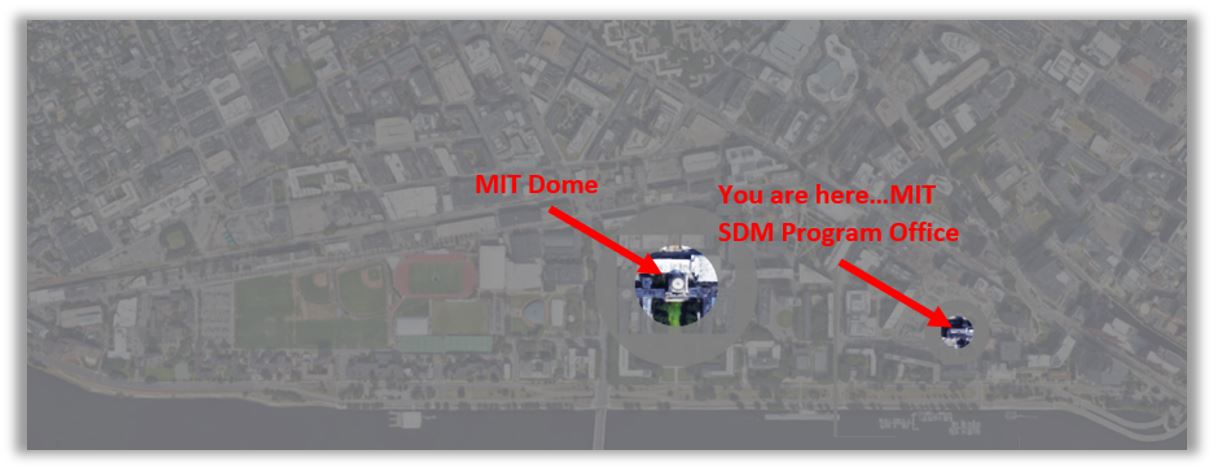
In my two years of navigating the expansive MIT ecosystem, I found it helpful to think about my journey not as finding the path of least resistance, but instead, as finding the path that is most conduc(t)ive. Like the path of least resistance, the path that is most conduc(t)ive can also be filled with many twists and turns that change your trajectory, but instead of road blocks and dead ends creating those changes, it is new ideas, opportunities, and people helping you to explore new possibilities. It was also necessary for me to think of my time very much as a limited resource as well, hence the (t). Before I get into some of the things that I found helpful in finding, and trying to stay on, the path that was most conduc(t)ive for me, it may be helpful to provide some context around my background and some of the “maps” that I explored before coming to MIT.
Where nowhere is home
Last year, the Washington Post published an article that evaluated which towns of 1,000+ residents in the U.S. were the most remote. To my surprise, on a map aptly titled “Where nowhere is home,” I discovered that I grew up in number eight, Holcomb, KS. To be specific, I grew up on a farm about 30 minutes outside of number eight on County Road X. My family eventually left the plains of Kansas for the mountains of Colorado, and after graduating from the University of Colorado with a degree in mechanical engineering, I continued west to California. I joined Applied Medical, a global, vertically integrated company that develops minimally-invasive surgical devices and systems. My experience was set against the backdrop of an extensive manufacturing and distribution operation. In this dynamic and fast-paced environment, I had the opportunity design new products, establish new capabilities for the organization, and build and lead new teams in both the U.S. and the Netherlands.
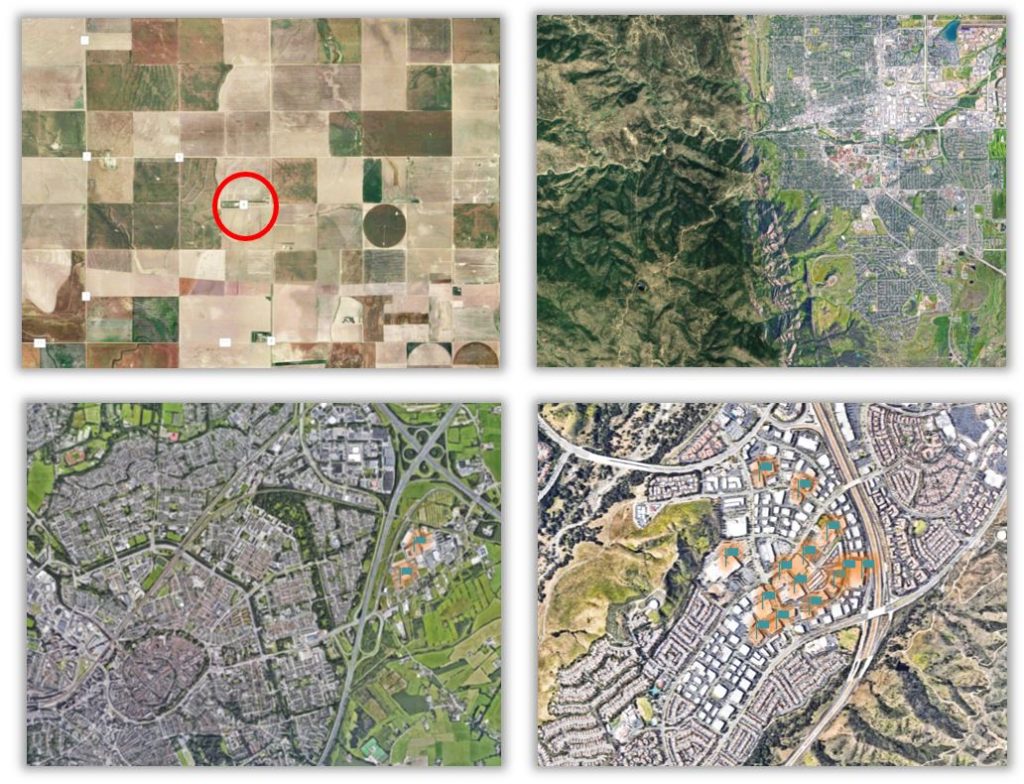
Clockwise from top left: Engler Farms outside Holcomb, KS; Boulder, CO; Applied Medical, Rancho Santa Margarita, CA; Applied Medical Europe, Amersfoort, NL
From space, Kansas, Colorado, California, and the Netherlands are all distinctly different looking places, and on the ground, they also have their own distinct cultures too. However, I found commonality from “nowhere” to the Netherlands. I encountered good, genuine people that I could foster supportive relationships with that enabled me to explore new opportunities and learn.
The Hand Turkey
I arrived at MIT with the experience of navigating new places, communities, and organizations; and most importantly, I understood the importance and value of establishing relationships and finding people to learn from and help me explore. MIT serves as a magnet for talented, creative, innovative, and driven people, so I expected that I would encounter a few more good people here too. To me, the MIT SDM program, which sits at the intersection of the School of Engineering and Sloan School of Management, was the perfect entry point into the MIT ecosystem and a place to call home for a few years. But where did I want to go and how did I want to get there? I spent almost nine years with Applied Medical focused on improving patient outcomes and enabling the advancement of minimally invasive surgery, so my most conduc(t)ive path started with two main goals:
- Explore and gain a better understanding of healthcare, biotech, and life sciences.
- Fill in the knowledge gaps I had in business, technology, and engineering.
This was a helpful place to start, but MIT is a complicated and busy place, with a lot of courses, labs, clubs, conferences, and events. I needed help, and it is a lot more fun to explore with others. Early on I connected with a few like-minded SDMers, and we started to informally scout and report back to each other to build a better collective understanding of the MIT ecosystem. We each had different interests and goals, and this group served to look out for each other so we could make the most of our time at MIT and discuss opportunities for our futures. I was also fortunate to have a fellow SDMer and a Sloan MBA student as roommates for my first year, which really helped with my exploration. I made a conscious effort to take advantage of the SDM program serving as a bridge between the Engineering and Management schools to get involved in graduate student government, cross-campus initiatives, conferences, and clubs. But I had some help in figuring out how to synthesize all this information and activity into my most conduc(t)ive path.
As much as I would like to say everything was planned, a lot at MIT, and in life, is happenstance, which is how I would describe a conversation I had with Joost Bonsen of the Media Lab at the end of my first semester. It was around the holidays and he festively used a hand turkey as a great analogy. You have five fingers, so choose five topics or areas of interest that you want to learn about across your required commitments at MIT and preparation for your time after.

With this in mind, I expanded on my two main goals, but quickly ran out of fingers. By focusing on five main areas, it helped me to prioritize my interests, and more importantly, my time. Below is a version of my interest map that came from this exercise. It definitely continued to change and shift throughout my time at MIT, but it helped me answer “where I want to go and how I want to get there.”
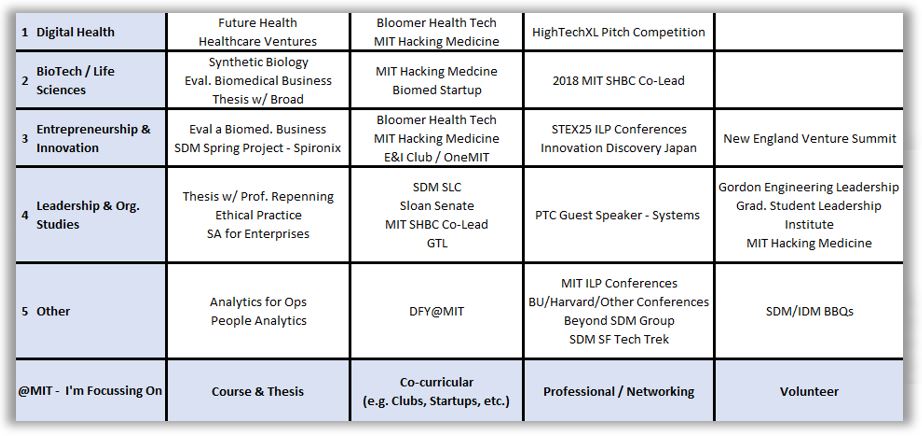
A benefit of routinely evaluating your interests and time at MIT in this way is that you can more easily connect with others on campus with similar interests. This helps to surface less publicized and unique opportunities that serve as the next step in your path that is most conduc(t)ive. Some of the most influential and fulfilling instances of this for me were:
- Serving on the Facilities and Equipment Work Group for The Engine: I did not come to MIT with the specific goal to pursue entrepreneurship, but it is difficult not to become interested in it when on campus. I wanted to explore more in this area, and I heard that MIT was working to create an incubator/VC organization, so I was looking for an opportunity to get involved.
Pro-tip(s): Keep an eye out for calls for student representation in the Graduate Student Council Anno emails and make sure to keep an updated resume ready!
- Connecting with Prof. Nelson Repenning (Sloan) and Oren Lederman (Media Lab) for my thesis: The Industrial Liaison Program (ILP) organizes conferences throughout the year with various themes that showcase the research and work of MIT labs and affiliated startups. It was here that I saw Prof. Repenning present on his implementation of Dynamic Work Design at the Broad Institute. I was able to tie in my interest in people analytics by reaching out to Sandy Pentland’s Human Dynamics Lab to work with Oren who was developing Rhythm Badges for measuring interpersonal communication and interactions.
Pro-tip(s): Note that in some instances, it is easier to reach out to the graduate/PHD student to learn about their work than the primary investigator. Also, the ILP conferences are a great place to connect and network with industry professionals.
- Serving as lead teaching assistant for the new course, Designing the First Year at MIT: MIT is a historic institution, which also means that it can take time to make changes. This includes the various academic, social, advising, housing, programs, and structures that encompass an undergraduate’s first year experience. With all of this in mind, Vice Chancellor Ian Waitz recruited a team of cross-Institute collaborators. But instead of creating another faculty committee, he reached out to those who are closest to the problem — the students. A new course was created to be offered in spring 2018, Designing the First Year at MIT. I was asked by Dr. Bryan Moser of the SDM program, who was co-leading the course with Dr. Bruce Cameron, to be the lead teaching assistant. I helped prepare lectures and led hands-on workshops to teach design and systems thinking. This was not an opportunity that I could have foreseen and it did require me to adjust my plans and stay at MIT for an additional semester. It was worth it though, as it served as a catalyst for changes that are already being implemented!
- Co-leading the 2018 Sloan Healthcare and BioInnovations Conference (SHBC): After organizing a panel for the 2017 conference, I was asked to be a co-lead for the 2018 conference. This was a great opportunity to reach out and connect with industry thought leaders and companies that I was specifically interested in. I was also able to connect a number of my interests together here through speakers, a startup pitch competition, and a workshop by MIT Hacking Medicine. Additionally, it was incredible to have Dr. George Church and Dr. Robert Langer give the opening and closing keynotes as I had written about them in my SDM application essay.
Pro tip(s):
1. People are very receptive to speaking with you when you reach out with an @MIT email address so be sure to take advantage of that and the Infinite Connection alumni network!
2. There are a lot of ways to get involved with conferences besides leading the team. Just reach out.
3. The 2019 SHBC is coming up on Feb. 21–22, so check out their website for more information.
I did have a few opportunities to work with various MIT faculty, staff, and administrators, including Provost Martin Schmidt and Vice Chancellor Ian Waitz. In this work, I found it helpful to know how the people of MIT connected with the schools, departments, committees, and programs. To visualize this, I built a network model that provides another view of MIT, the MIT Navigator (please note this is not complete and represents more of the desired path of organization, but it might help you find some paths to explore).
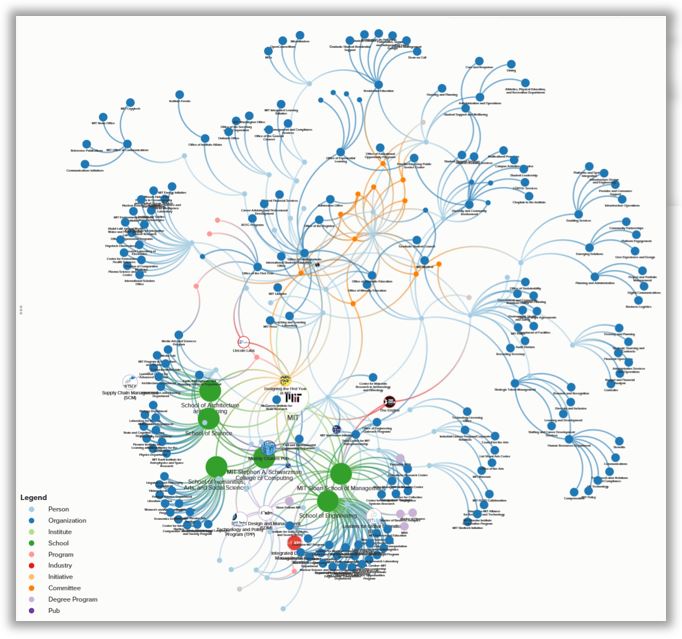
Being prepared takes a little bit of discipline. It requires you to ask yourself questions and evaluate what you are committing your time to, but it helped me to make the most out of my two years at MIT. In doing so, I believe I was able to lift the shroud off my mental map of MIT. I did not explore the entirety of MIT, but I was able to find the path that was most conduc(t)ive to me and what I wanted to accomplish. If you are new to MIT, looking for a place to start, and are 21+, the Muddy Charles Pub is almost equal distance between the main campus and Sloan. It is a great place to run into people that can help you find your most conduc(t)ive path.
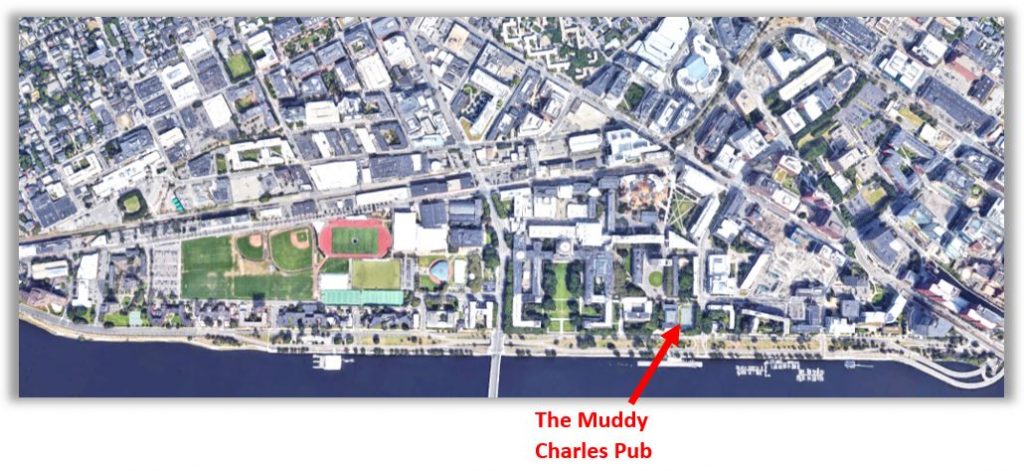
In closing, I would emphasize that the people that I met and the relationships that I can carry with me after MIT are by far the most valuable part of my experience. So much so that I have continued working with a talented team of them at a startup, Bloomer Health Tech. You can read more about the work we are doing to combat women’s cardiovascular disease in this Technology Review article.
I would like to say a big thank you to everyone who helped me find my way. I wish you all the best in your MIT adventure and my hope is that this post helps you find the path that is most conduc(t)ive for you!
Ben Linville-Engler is a 2018 graduate of the MIT Systems Design & Management program. He is currently the Technology, Quality & Regulatory Systems Lead at Bloomer Health Tech, an MIT startup.
Image: Cartoon map of MIT campus, ca. 1968 by J. Leary, is courtesy of the MIT Libraries’ Institute Archives & Special Collections

